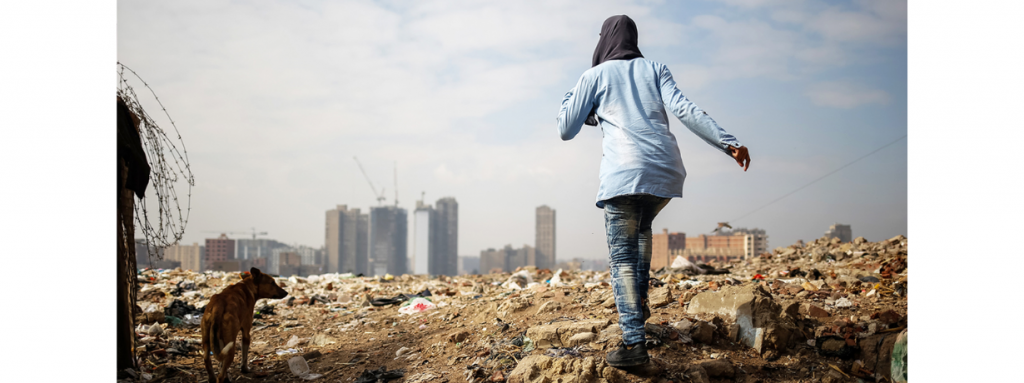4 min read
When cities grow rapidly, residents often find that they have few opportunities to decide what they want for their cities. City officials are also challenged to meet increasing demands for decent housing, basic services, transport, employment, crime prevention and urban environmental preservation.
Additionally, rapid and unplanned urbanisation can make cities more susceptible to disasters, particularly so for informal urban settlements, which have the highest exposure to disaster risks due to their lack of adequate infrastructure and basic services. Informal settlements do not necessarily exist outside of the formal city economy. In fact, some estimates suggest that informal settlements can provide up to 30 percent of a city’s labour needs[1]. Conversations around urban resilience, however often happen in a vacuum, removed from the very people – children and young people – in informal settlements whose lives are affected by these decisions.
Young people, as users and owners of cities, are valuable and uniquely positioned to develop solutions to today’s urban problems.
In working with city governments in Jakarta and Manila to engage with vulnerable communities, my teams find that the key is to empower young people, especially girls and young women. Our projects, therefore, build the capacity of young people who can design and prototype solutions to urban issues in their communities.
Through these projects, I have identified a few key learnings to empower young people as solution-makers:
Use the Participatory Action Research model to engage young people as change agents from the outset
Participatory Action Research (PAR) is an approach that seeks to situate power within the research process with those who are most affected. The intention is that participants (young people, community members and other stakeholders) are equal partners with the researchers. They undertake the research together, so everyone can collectively understand and learn through the process. This process is linked to action, which ideally leads to people and communities having increased control over their lives[2].
Using a PAR process at the outset of the Manila and Jakarta projects enabled the most pressing urban resilience issues and needs concerning young people to be identified. The process also identified common negative perceptions about the role of young people, especially young women, in resilience building and challenges for youth participation in urban governance.
We used the PAR to co-create an action plan for how young people could become innovators and solution makers for the urban problems they identified. It highlighted the need to develop sustainable mechanisms to include young people in urban governance and decision-making processes, to ensure the ongoing inclusion of youth voices and ideas after the project has been completed.
Use human-centred design principles and design-sprint approaches to train young people to become ‘solution innovators’
Whilst innovation comes naturally to some people, it is largely a learnt skill.
Using human-centred design principles, which prioritises people and considers them at all stages of the problem-solving process, the projects are engaging young people in a design sprint process. The ‘sprint’ takes three months, where young people will rapidly progress from an identified problem to a tested prototype solution. It involves training young people in visioning and creative thinking, to generate solutions to the problems they identify, including disaster risk management, climate change adaptation, urban livelihood resilience and green economy livelihood development. Young people are taught how to invent their own solutions and reiterate through trial and error. Failure has been an incredibly powerful tool for learning, to understand that not all ideas are going to work.
The next step is for young people to design, prototype and test their ideas. Products and ideas developed will be pitched to local government and private organisations for enhancement of business models, investment and future adoption, whilst ensuring young creators have ownership and involvement in the process.
Provide capacity building training to young entrepreneurs
Whilst traditional forms of support for young entrepreneurs are important, such as seed grants and business plan development assistance, there are additional ways to build their skills and capacity. For example, whilst young people are often considered the digital generation, not all young people have had equal access to digital technologies, or reliable telecommunications networks, depending on where they live, or their socio-economic status. Plan International, therefore, is providing online training in digital literacy to youth in vulnerable communities of Manila and Jakarta.
Looking forward – How can we better support young change agents?
All too often we dismiss young people’s opinions and ideas as unimportant or unrealistic. However, by valuing young people’s innovation and giving them the training, tools and support they need, they can create solutions to today’s most complex challenges. We need to develop ways to continuously engage young people as change makers and support them in developing solutions for sustainable urban resilience.
This requires collaboration and support for innovation. At Plan International, we established an ‘Urban Hub’ to encourage internal stakeholders to share and expand our knowledge and practice on working with young people, particularly adolescent girls, to engage with the global urbanisation phenomena. Stay tuned to the Plan International website for more information: https://plan-international.org/.
[1] Dovey, K, (2016), Urban Design Thinking, Bloomsbury Academic, New York, 226.
[2] Baum, F, MacDougall, C, & Smith, D, (2006), ‘Participatory Action Research’, Journal of Epidemiology and Community Health, 60(10): 854–857, doi: 10.1136/jech.2004.028662


















